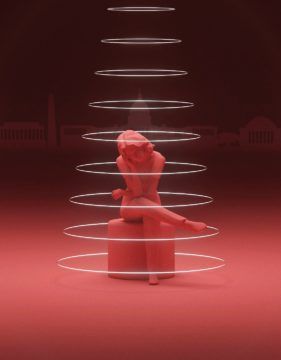Adam Entous in The New Yorker:
 During the final weeks of the Trump Administration, a senior official on the National Security Council sat at his desk in the Eisenhower Executive Office Building, across from the West Wing, on the White House grounds. It was mid-November, and he had recently returned from a work trip abroad. At the end of the day, he left the building and headed toward his car, which was parked a few hundred yards away, along the Ellipse, between the White House and the Washington Monument. As he walked, he began to hear a ringing in his ears. His body went numb, and he had trouble controlling the movement of his legs and his fingers. Trying to speak to a passerby, he had difficulty forming words. “It came on very suddenly,” the official recalled later, while describing the experience to a colleague. “In a matter of about seven minutes, I went from feeling completely fine to thinking, Oh, something’s not right, to being very, very worried and actually thinking I was going to die.”
During the final weeks of the Trump Administration, a senior official on the National Security Council sat at his desk in the Eisenhower Executive Office Building, across from the West Wing, on the White House grounds. It was mid-November, and he had recently returned from a work trip abroad. At the end of the day, he left the building and headed toward his car, which was parked a few hundred yards away, along the Ellipse, between the White House and the Washington Monument. As he walked, he began to hear a ringing in his ears. His body went numb, and he had trouble controlling the movement of his legs and his fingers. Trying to speak to a passerby, he had difficulty forming words. “It came on very suddenly,” the official recalled later, while describing the experience to a colleague. “In a matter of about seven minutes, I went from feeling completely fine to thinking, Oh, something’s not right, to being very, very worried and actually thinking I was going to die.”
He fell to the ground before he reached his car, and realized that he was in no condition to drive. Instead, he made his way to Constitution Avenue, where he hoped to hail a taxi. He managed to open the Lyft app on his phone, and ordered a driver, who took him to the hospital. When he arrived at the emergency room, the official thought, I’m probably not walking out of here. He approached the reception desk. “Are you on drugs?” a doctor asked him. The official shook his head. He was led to an examination room. Hospital staff found his White House identification card in his pocket, and three cell phones, one of which they used to call his wife. They thought he might be having a stroke, but an MRI ruled it out. Blood tests also turned up nothing unusual. The official, who was in his mid-thirties, had no preëxisting conditions. The doctors were at a loss, but told him they suspected that he had suffered a “massive migraine with aura.”
It took about two hours for his speech to begin to return. When he checked out of the hospital, the next day, he still had a pounding headache, but was soon able to go back to work. Several days later, a colleague called him to discuss suspected cases of the Havana Syndrome, a mysterious ailment that had first affected dozens of U.S. officials in Cuba, and which now appeared to be spreading. The N.S.C. official didn’t think that he was suffering from the Havana Syndrome; it seemed outlandish that someone would be struck while on the grounds of the White House. But, as his colleague described some of the more severe cases that had been reported, it occurred to the official that this might be his problem. “Look, this is probably nothing,” he told his colleague, “but what you described sounds kind of like what happened to me.”
More here.
